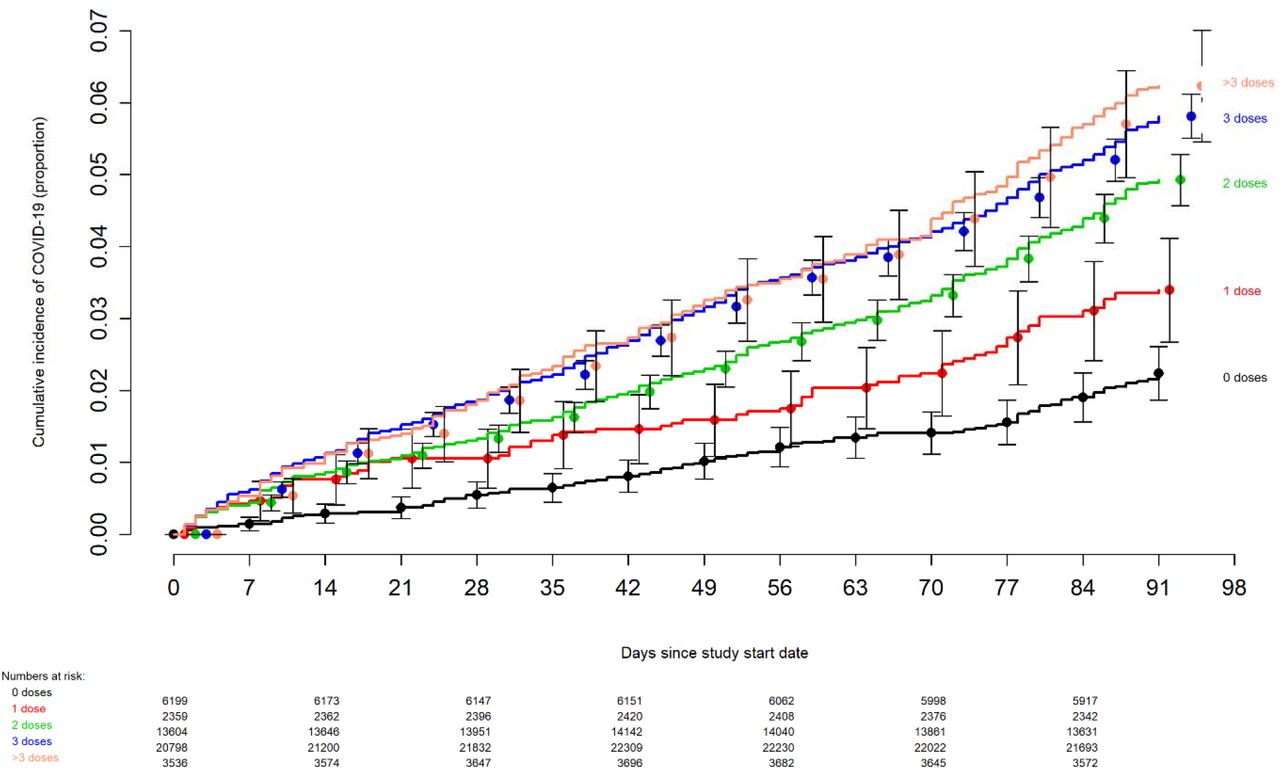"Conclusions The bivalent COVID-19 vaccine given to working-aged adults afforded modest protection overall against COVID-19, while the virus strains dominant in the community were those represented in the vaccine."
I will highlight the part that you seem to be overlooking.
"Conclusions The bivalent COVID-19 vaccine given to working-aged adults afforded modest protection overall against COVID-19, while the virus strains dominant in the community were those represented in the vaccine."
So the vaccine offers modest protection, but
only while the strain targeted by the vaccine is dominant in the community.
After that, it leaves your immune system fucked.
Which is why, and I will quote it again,
"the greater the number of vaccine doses previously received the higher the risk of COVID-19".
I will make an analogy.
Say there is a haircut that can protect you against the subspecies of brown bear called the Kodiak bear.
It is modestly effective at scaring the Kodiak bears away. But every other type of bear attacks anyone with that haircut.
Now you are going to Alaska in an area where there are Kodiak bears, so you get the haircut. And while you are there, it provides modest protection.
But then you go into areas where there are different subspecies of brown bears. Now you are in more danger from all those other types of brown bears than if you did not get the Kodiak specific haircut.
And you are also in more danger from black bears. And polar bears. And every other type of bear.
Kodiak = virus strain currently dominant in the community
Grizzly and other brown bears = all other stains of Covid-19 than the one currently dominant in the community at the time of the injection
Black bear = the common cold
Polar bear = influenza
So re-read the sentence and focus on the condition
"while the virus strains dominant in the community were those represented in the vaccine".
That is why the statement made in the study can hold true:
"the greater the number of vaccine doses previously received the higher the risk of COVID-19"





